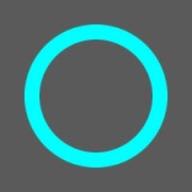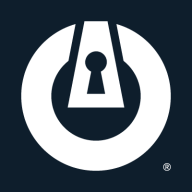

Portnox and ThreatLocker compete in network access and endpoint protection. Portnox appeals to budget-conscious users with its affordability and solid support, while ThreatLocker, with its extensive security features, is ideal for those who prioritize comprehensive endpoint security despite higher costs.
Features: Portnox offers robust network access control, seamless cloud integration, and flexible deployment options. It's known for its strong network management capabilities and integration with multiple security solutions. ThreatLocker provides application whitelisting, ringfencing, and elevation control, delivering detailed security policies tailored for comprehensive endpoint protection.
Room for Improvement: Portnox could enhance its user interface and expand its reporting features. More detailed security insights and automation capabilities are areas for growth. ThreatLocker could improve by offering a more granular ringfencing feature and reducing costs. Simplifying the configuration process and offering better offline access could also be beneficial.
Ease of Deployment and Customer Service: Portnox supports versatile deployment models, including cloud, on-premises, and hybrid, with reliable customer service known for promptness. ThreatLocker provides straightforward cloud-based deployment. Its customer service is hands-on, aiding in large-scale implementations with a comprehensive support approach.
Pricing and ROI: Portnox offers cost-effective solutions with straightforward pricing, ensuring quick ROI that appeals to budget-focused organizations. ThreatLocker requires a higher initial investment but delivers substantial ROI through its extensive features and robust security, making it valuable for those seeking advanced protection.
If you were moving from a traditional on-premise NAC that was 100% managed by the IT department, there would be great savings in going to a cloud-based NAC with Portnox.
If something were to happen without ThreatLocker, the cost would be huge, and thus, having it is definitely worth it.
The main return on investment is peace of mind, knowing that with ThreatLocker on any endpoint, it will almost always block all malicious code or exploits, even zero-day exploits.
It keeps malware, Trojans, and ransomware at bay.
They respond very immediately and provide detailed, amazing support.
I was seeing weird things, and they were able to explain things to me and help me quickly find a resolution.
They resolved issues quickly and provided clear explanations.
They have been very responsive, helpful, and knowledgeable.
I would rate their customer support a ten out of ten.
Their support is world-class.
I started off with just the servers, and within a month and a half, I set up the entire company with ThreatLocker.
It seems to primarily operate on the endpoints rather than at a central location pushing out policies.
I would rate it a ten out of ten for scalability.
The product itself is available and its uptime is 100%.
For five years, we have not had a problem.
Once deployed, it downloads the policies locally, so even if the computer doesn't have internet, it doesn't matter.
It has been very stable, reliable, and accessible.
Ideally, we should be able to search for any MAC address in the database, regardless of its authentication status, to see all its associated groups and potential conflicts.
When I'm doing filtering at times, it doesn't filter the items properly.
They don't have much support during Asia Pacific hours.
Controlling the cloud environment, not just endpoints, is crucial.
This is problematic when immediate attention is needed.
Comprehensive 24-hour log monitoring is a valuable enhancement for both business and enterprise-level users.
If you compare Portnox with all other well-known standard products, it is the cheapest.
The pricing is a bit high, possibly due to the cloud features and running instances across regions like the US, Asia, and Europe.
It is a bit on the high side, but considering the cloud features and how much it costs to run the instance in the cloud, it is not unreasonable.
After conversations with other partners, it became clear we underpriced it initially, which caused most of our issues.
We are moving towards the Unified solution, where they basically bundle everything together, providing us better stability with the ability to bring in new product offerings without having to go back to the customer and say, 'This is going to cost you.'
I had a really good deal at the time, and it continues to be cost-effective.
It's notable how Portnox has improved operational efficiency.
It is very easy to implement on our current network hardware.
We use Meraki for our switching, making it simple to point all our networks and offices to Portnox.
ThreatLocker Zero Trust Endpoint Protection Platform's ability to block access to unauthorized applications has been excellent.
It protects our customers.
The major benefit is fewer breaches overall, as nothing can be run without prior approval. This helps my company protect its data and secure itself effectively.


Portnox offers Network Access Control to manage user access based on policy, securing both wired and wireless networks while ensuring compliance. It supports endpoint security and prevents unauthorized access across industries such as banking, IT, and energy distribution.
Designed for both on-premises and cloud deployments through CORE and Clear versions, Portnox delivers a straightforward interface aiding in deployment. It integrates effectively with equipment from multiple vendors and security solutions, enhancing endpoint profiling and ensuring compliance. Portnox provides real-time alerts and network activity insights, bolstered by excellent technical support and scalability. It also automates monitoring, reducing the need for dedicated resources while offering a comprehensive view of network activities.
What are the essential features of Portnox?
What benefits should users focus on in Portnox reviews?
Across industries like banking and IT, organizations rely on Portnox for endpoint profiling and compliance, ensuring remote worker security. Electricity distributors leverage its robust features for managing secure network access. Improvements like better third-party integration, enhanced graphical interface, and expanded support are desired, along with licensing adjustment and expanded use of AI and behavioral analytics.
ThreatLocker Zero Trust Endpoint Protection Platform offers robust endpoint security through application control and allowlisting, safeguarding servers and workstations from unauthorized software execution.
ThreatLocker Zero Trust Endpoint Protection Platform provides extensive application control with features like ring-fencing and selective elevation, ensuring meticulous execution management. Offering learning mode and extensive support, it integrates threat detection and activity monitoring to enhance compliance, reduce costs, and bolster cybersecurity through alerts and approvals. Despite its strengths, there are areas for improvement in training flexibility, policy updates, and interface enhancements, along with challenges in handling non-digitally signed software. Deployed across environments, it works well with existing cybersecurity instruments for real-time threat prevention.
What are the top features of ThreatLocker?ThreatLocker Zero Trust Endpoint Protection Platform is widely implemented to safeguard IT infrastructures against unauthorized access and application use. In sectors where data security is paramount, this platform enables users to prevent unauthorized software installations and control device applications, ensuring real-time threat prevention and compliance with industry regulations.
We monitor all Network Access Control (NAC) reviews to prevent fraudulent reviews and keep review quality high. We do not post reviews by company employees or direct competitors. We validate each review for authenticity via cross-reference with LinkedIn, and personal follow-up with the reviewer when necessary.